
SEPARATION AND PURIFICATION TECHNOLOGY
Scope & Guideline
Connecting researchers to the pulse of purification advancements.
Introduction
Aims and Scopes
- Separation Technologies:
The journal publishes research on various separation technologies, including membrane filtration, adsorption, and distillation, highlighting innovative approaches and materials that enhance separation efficiency. - Purification Processes:
Research on purification methods for removing contaminants from various matrices, including water, air, and industrial effluents, is a core focus, particularly emphasizing sustainable and eco-friendly methods. - Advanced Materials:
The development and application of advanced materials, such as metal-organic frameworks (MOFs), nanomaterials, and bio-inspired materials, for separation and purification purposes are central topics. - Environmental Applications:
The journal emphasizes studies that address environmental challenges, including wastewater treatment, resource recovery, and the remediation of contaminated sites. - Process Optimization and Modeling:
Papers that explore process optimization, modeling, and simulation of separation and purification processes are crucial, aiming to improve operational efficiency and reduce costs. - Innovative Characterization Techniques:
Studies utilizing novel characterization techniques to understand the mechanisms of separation and purification processes are encouraged, providing insights into material interactions and performance.
Trending and Emerging
- Sustainable and Green Separation Processes:
There is a significant increase in research focused on sustainable and eco-friendly separation methods, emphasizing the use of renewable resources and minimizing environmental impact. - Nanotechnology in Separation:
Nanomaterials and nanotechnology are increasingly prominent in separation and purification research, with applications in enhanced adsorption, filtration, and photocatalysis. - Electrochemical Methods:
The use of electrochemical methods for separation and purification has gained traction, with studies focusing on innovative electrochemical systems for pollutant removal and resource recovery. - Photocatalytic and Advanced Oxidation Processes:
Research on photocatalytic processes and advanced oxidation methods for degrading organic pollutants is trending, highlighting the importance of light-driven technologies in environmental remediation. - Hybrid Separation Technologies:
The integration of multiple separation technologies, such as combining membrane processes with adsorption or electrochemical methods, is emerging as a popular approach to enhance efficiency and selectivity. - Machine Learning and Computational Approaches:
The application of machine learning and computational modeling to optimize separation processes and predict material performance is an emerging theme, reflecting the digital transformation in research.
Declining or Waning
- Traditional Chemical Separation Methods:
Research focused on conventional chemical separation methods is declining as newer, more sustainable technologies gain prominence, reflecting a shift towards greener practices. - Low-Impact Membrane Technologies:
There appears to be a waning interest in low-impact or less innovative membrane technologies, as the field progresses towards more advanced, multifunctional membranes. - Basic Adsorption Studies:
Studies that only explore basic adsorption mechanisms without the integration of advanced materials or innovative applications are less frequently published, indicating a move towards more complex and applied research. - Conventional Sorbent Materials:
The use of traditional sorbent materials without modification or enhancement is declining, as researchers increasingly focus on novel, engineered materials that offer better performance.
Similar Journals
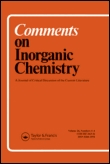
COMMENTS ON INORGANIC CHEMISTRY
Bridging Theory and Practice in Inorganic ChemistryCOMMENTS ON INORGANIC CHEMISTRY is a prestigious academic journal published by Taylor & Francis Ltd, specializing in the dynamic field of inorganic chemistry. With an impressive impact factor placing it in the Q1 category, this journal ranks #6 out of 79 in its field, reflecting its high influence and contribution to the discipline, with a remarkable percentile ranking of 93rd. Since its inception in 1981 and spanning publications until 2024, this journal serves as a crucial platform for researchers, professionals, and students to disseminate groundbreaking findings, review articles, and discussions on contemporary topics in inorganic chemistry. Although it is not an Open Access journal, the rigorous peer-review process ensures the publication of high-quality research. By bridging theoretical and practical aspects of inorganic chemistry, COMMENTS ON INORGANIC CHEMISTRY remains an essential resource for advancing knowledge and fostering innovation within the scientific community.
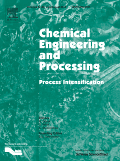
Chemical Engineering and Processing-Process Intensification
Innovating Chemical Engineering for a Sustainable FutureChemical Engineering and Processing - Process Intensification is a leading journal published by Elsevier Science SA, specializing in the multifaceted domain of chemical engineering. With the ISSN 0255-2701 and E-ISSN 1873-3204, this journal stands as a beacon of knowledge, facilitating the dissemination of innovative research from 1984 onwards and continuing through 2024. Renowned for its rigorous peer-review process, it boasts a distinguished reputation, reflected in its top-tier rankings within several fields: Q1 in Chemical Engineering (Miscellaneous), Q2 in Chemistry, and Q1 in Industrial and Manufacturing Engineering. This journal focuses on the advancements in process intensification, which are crucial for optimizing efficiency and sustainability in chemical processes. Although access is not open, the journal serves as an essential resource for researchers, professionals, and students alike who seek to advance their understanding and contribute to the evolving landscape of chemical engineering and process technology. Join a community of innovators driving the future of process engineering through impactful and cutting-edge research.
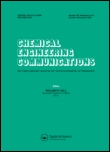
CHEMICAL ENGINEERING COMMUNICATIONS
Exploring Critical Insights in Chemistry and Engineering.Chemical Engineering Communications, published by Taylor & Francis Inc, is a distinguished journal within the realms of Chemical Engineering and Chemistry. With an ISSN of 0098-6445, this journal plays a pivotal role in disseminating innovative research, critical reviews, and insightful discussions that encompass a broad spectrum of topics in these fields. The journal boasts a commendable Q2 ranking in the 2023 category of chemical engineering and general chemistry, reflecting its significant contribution to the scientific community. Operating under a rigorous peer-review process, the journal attracts high-quality submissions from global researchers. Although currently not an Open Access journal, it provides extensive archive access for users interested in exploring past advancements from its inception in 1973 through to 2024. With a commitment to advancing knowledge and fostering collaboration among academia and industry, Chemical Engineering Communications remains an essential resource for professionals and students aiming to stay abreast of the latest developments in chemical sciences.

ADSORPTION-JOURNAL OF THE INTERNATIONAL ADSORPTION SOCIETY
Pioneering Knowledge in Surfaces and InterfacesADSORPTION: Journal of the International Adsorption Society is a premier peer-reviewed journal, published by Springer, dedicated to advancing the understanding of adsorption phenomena across a wide range of applications in chemical engineering, chemistry, and surfaces and interfaces. With an impressive impact factor and renowned rankings—being positioned in the top quartile for Chemical Engineering and high percentiles in Chemistry and Physics—this journal serves as a vital resource for researchers, professionals, and students aiming to keep abreast of cutting-edge developments from 1995 through 2024 and beyond. The journal is pivotal in facilitating the dissemination of knowledge, fostering interdisciplinary collaboration, and showcasing innovative research in adsorption science. Although it does not operate under an open access model, its importance within the academic community is undeniable, providing significant insights into both theoretical and practical aspects of adsorption processes.

MINERALS ENGINEERING
Unveiling Cutting-Edge Insights in Minerals EngineeringMINERALS ENGINEERING, an esteemed journal published by PERGAMON-ELSEVIER SCIENCE LTD, is at the forefront of disseminating cutting-edge research in the fields of minerals processing, geotechnical engineering, and control systems. Since its inception in 1988, this journal has become a pivotal platform for researchers, professionals, and students alike, offering insights and advancements that contribute significantly to both academia and industry. With a strong emphasis on interdisciplinary approaches, MINERALS ENGINEERING is ranked in the top quartile (Q1) for multiple engineering categories, including Mechanical Engineering and Geotechnical Engineering, highlighting its relevance and influence in the global scientific community. Although not an open access journal, it provides comprehensive analyses and robust methodologies that are critical for advancing technological innovations and environmental sustainability within engineering. Researchers can rely on this journal to stay informed about the latest developments, trends, and challenges they face in the field, ensuring they are at the forefront of minerals engineering research.

THEORETICAL FOUNDATIONS OF CHEMICAL ENGINEERING
Charting New Territories in Chemical Engineering ResearchTHEORETICAL FOUNDATIONS OF CHEMICAL ENGINEERING is an esteemed academic journal published by PLEIADES PUBLISHING INC, dedicated to advancing the field of chemical engineering and chemistry through rigorous theoretical discourse and scholarly communication. With a history of publication dating back to 1974, the journal has been a vital resource for researchers and professionals, contributing to the foundation of knowledge in this multidisciplinary domain. Although it does not offer open-access options, it remains an essential platform for innovative research, boasting a 2023 ranking in the Q3 quartile for both Chemical Engineering and General Chemistry categories. The journal is indexed in Scopus, where it ranks #210 out of 273 in Chemical Engineering and #317 out of 408 in Chemistry, emphasizing its growing relevance within the scholarly community. Researchers, educators, and students alike can benefit from the insights and findings shared within its pages, making it a critical venue for those seeking to enhance their expertise in theoretical chemical engineering.

Physicochemical Problems of Mineral Processing
Transforming Mineral Processing Through Cutting-edge SciencePhysicochemical Problems of Mineral Processing is a prestigious journal that serves as a vital resource in the fields of Economic Geology, Geology, Materials Chemistry, Physical and Theoretical Chemistry, and Process Chemistry and Technology. Published by OFICYNA WYDAWNICZA POLITECHNIKI WROCLAWSKIEJ in Poland, this journal has been a cornerstone of interdisciplinary research since its inception in 2008, with a commitment to advancing our understanding of mineral processing through innovative physicochemical methodologies. With a respectable Q3 category ranking across multiple disciplines and Scopus rankings that reflect its growing impact and relevance, the journal invites researchers, professionals, and students to explore cutting-edge studies, original articles, and case reports aimed at enhancing the mineral processing field. While the journal does not offer open access, it provides valuable insights and contributions to the global academic community, making it essential reading for those looking to push the boundaries of knowledge in this critical area.
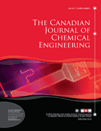
CANADIAN JOURNAL OF CHEMICAL ENGINEERING
Delivering Insightful Perspectives in Chemical EngineeringCanadian Journal of Chemical Engineering, published by Wiley, stands as a pivotal platform in the field of chemical engineering, addressing a myriad of topics essential for researchers, professionals, and students alike. With ISSN 0008-4034 and E-ISSN 1939-019X, this journal has been a cornerstone of chemical engineering scholarship since its inception in 1958 and continues to provide valuable insights through its rigorous peer-reviewed articles. The journal is ranked in the Q2 category of the Scopus quartile rankings, reflecting its influence and relevance within the chemical engineering community, with a notable position of #137 out of 273 in the general chemical engineering field. Although it does not offer open access options, its comprehensive coverage of contemporary research and applications solidifies its status as a vital resource for advancing knowledge and innovation in chemical engineering.
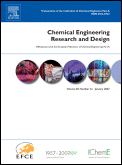
CHEMICAL ENGINEERING RESEARCH & DESIGN
Shaping Tomorrow's Chemical Engineering Landscape.CHEMICAL ENGINEERING RESEARCH & DESIGN is a prestigious journal that has been at the forefront of dissemination in the fields of chemical engineering and general chemistry since its inception in 1983. Published by Elsevier, the journal features a rich array of research articles that contribute to both theoretical and practical advancements in the discipline. With an impact factor that positions it strongly within the Q2 quartile for both Chemical Engineering and Chemistry categories, it occupies an esteemed place in the academic community, being ranked #77 out of 273 in Chemical Engineering and #111 out of 408 in General Chemistry on Scopus. Researchers and professionals will find it an invaluable resource for cutting-edge research and innovative methodologies that shape the future of chemical engineering applications. While the journal does not currently offer open access, it remains accessible through institutional subscriptions, ensuring that important findings continue to reach a broad audience. With a scope that is poised to expand through 2024, the journal aims to foster collaboration and knowledge sharing, supporting the continuous evolution of the field.

NATION
Advancing knowledge in Cultural Studies and beyond.NATION is a prestigious and influential journal that has been serving the field of Social Sciences and Cultural Studies since its inception. Published by NATION CO INC, this journal offers a platform for innovative research and critical discourse, empowering scholars to explore the complexities of culture, politics, and society. Although currently not an open-access publication, NATION remains a significant resource for researchers and practitioners aiming to stay abreast of the latest developments in the field. With a history of converging years of publication and a notable ranking of #796 out of 1002 in the Scopus Social Sciences_Cultural Studies category—with a percentile of 20%—the journal's contributions continue to play a vital role in academic discussions and cultural critiques. The editorial office is located at 33 Irving Place, 8th Floor, New York, NY 10003, facilitating a dynamic interaction between contributors and the editorial team. By engaging with this journal, academics and professionals can enrich their understanding of crucial cultural phenomena.